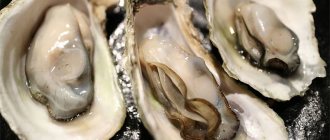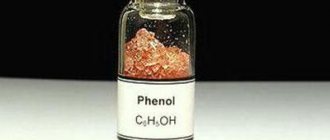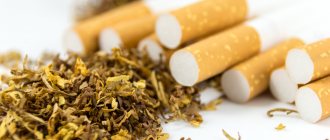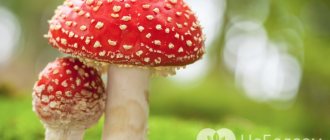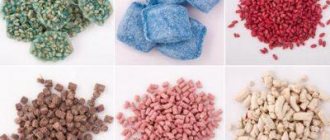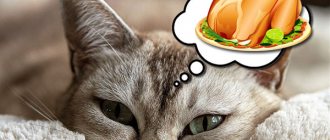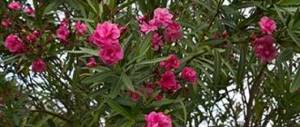Many people do not realize that burns from hogweed are no less likely than those caused by contact with something hot or chemicals. But it is not the plant itself that is dangerous, but the interaction of its juice and sunlight on the skin. Hogweed does not cause burns if its juice gets on the skin in rainy or cloudy weather, but the skin can be seriously damaged if the juice of this plant gets on it, and then ultraviolet rays.
Despite the fact that the burn occurs from the rays of the sun, such damage is classified as a chemical burn, because when the juice interacts with ultraviolet rays, chemical reactions occur that make the tissue very sensitive to the sun. In addition, with an ordinary sunburn, hyperpigmentation does not occur, but with a burn from hogweed it is present.
What is hogweed?
Hogweed is a plant that resembles dill in appearance. Its leaves occupy an intermediate position between burdock and thistle. Most species reach a height of only 30–40 cm, but Sosnowski's hogweed is an exception. During the period of active flowering, which occurs in August, the height of the stem can reach 5–6 m, and the diameter of the inflorescence can be 80. The sap of the plant can cause harm to humans.
The produced liquid is rich in essential oils, which contain furanocoumarins - substances with sensitizing properties. When it comes into contact with the surface of the skin under the influence of ultraviolet radiation, a burn develops. In fact, it is the result of a complex chemical reaction that hogweed juice undergoes when exposed to sunlight. This is taken into account when choosing a method of therapy.
Know the enemy by sight
The peak period for seeking medical help for burns from hogweed juice occurs in June-July, although this plant itself can be dangerous in May and September. The only way to avoid problems is to bypass the hogweed three miles away. And for this it would be nice to be able to recognize it by studying the “portrait” on the Internet.
Typically, Sosnovsky's hogweeds are distinguished by their high growth (such an “umbrella” can reach a length of 3-5 m). But you can also get burned by a low young plant. Therefore, for those who are not strong in botany, it is better not to try to find out whether a particular hogweed is dangerous or not, but to stay away from any “umbrellas”: both large and small.
Question answer
What dangerous substances are contained in hogweed juice?
It is especially important to warn against dangerous contact with children who like to play “war games” in the shade of large “umbrellas” and make tubes for shooting rowan berries from powerful hollow stems. As a result of such games, terrible damage to the mucous membranes, eyes and skin can occur. In addition, you should absolutely not walk barefoot on mown grass if there are hogweed stumps sticking out from there. They have a lot of juice. And in general, it is better not to approach the hogweed within a cannon shot. And if you decide to harass him, it is important to protect all parts of the body with tightly fitting clothing made of very thick, waterproof fabric, put on rubber gloves on your hands, goggles on your eyes, and rubber boots on your feet. It is also extremely important to remove all this ammunition very carefully to eliminate the risk of poisonous juice entering. But it’s still better to entrust the extermination of hogweed to professionals.
Signs of a hogweed burn
In most cases, the first symptoms of a hogweed burn appear some time after contact with the plant. In the absence of direct sunlight, a burn may not appear. This is confirmed by cases when, in cloudy weather, persons in contact with hogweed do not notice changes on the skin. However, in most cases, after 1-3 hours a dark spot appears on the skin, followed by redness. This is what burns from hogweed initially look like. The intensity of the changes depends on the time that has passed since contact with the plant.
Therapeutic measures
Only the doctor, after an examination, should decide how to treat burns from hogweed. Self-prescribing any medications to yourself can have the opposite effect and cause complications. And yet, many people want to know how to treat burns from hogweed at home and in the hospital.
At the beginning, the doctor prescribes painkillers, as well as non-steroidal anti-inflammatory drugs in the form of ointments. If severe inflammation occurs, medications may be prescribed, including corticosteroids. Hormonal steroids are used if erosions have formed on the skin, as well as ulcerative defects. These medications are usually used in courses lasting five days. Longer use of hormonal drugs can only be prescribed for serious indications, since hormones have a number of side effects.
If the patient does not have any complications, then treatment consists only of eliminating the symptoms; the burn heals on its own. If you use ointments during the formation of a blister, there is a risk of its early opening, which prevents rapid natural tissue regeneration. Doctors also do not open the blister, as this may cause a scar to form. If there is severe itching after opening the blister on your own, the doctor will prescribe antihistamines.
What does a hogweed burn look like?
A few hours after touching the plant, patients notice a dark spot at the site of contact. After a day, sometimes even several, it gives way to blisters with liquid. Over time, they increase in size and connect with each other. Outwardly, they resemble blisters that form during a second-degree thermal burn. After 3-5 days, the hogweed burn (photo below), the blister, becomes less pronounced.
If accidentally touched, the integrity of the bubble is violated, which bursts. The contents leak out. At this stage, it is necessary to pay close attention to the emerging erosion in order to prevent infection. Secondary infections in hogweed burns are common and significantly increase the wound healing period. In its place a crust forms, which lasts for two weeks.
Everyone is at risk
First, the skin on which the poisonous juice has come into contact begins to itch and turn red. Then a burning sensation appears, the skin swells, becomes covered with small blisters, which then merge into large blisters with serous contents. At this stage there is no pain, but as soon as the blisters burst, severe pain occurs, which increases with any touch to the wound. But even after healing, dark pigment spots or scars remain for a long time (sometimes forever).
Therefore, it is important not only not to touch the hogweed, but also to avoid this terrible plant altogether, because all its parts are dangerous: the leaves, the stem, and the white flowers.
The lighter a person’s skin and the higher its sensitivity to ultraviolet radiation, as well as the larger the area of skin in contact with the poisonous juice, the worse the damage will be, up to 1st degree burns. Therefore, children suffer more severely than adults. However, more or less, everyone risks getting burned. You should not believe the stories that the presence or absence of a reaction to hogweed depends on some characteristics of the skin, immunity, and other things. None of this is true. Anyone will get burned if they touch a dangerous plant on a sunny day. And if this did not happen, it means that it was not Sosnovsky’s hogweed, but some other type of this plant.
Dangerous juice. Doctors tell us how to deal with burns from hogweed Read more
How dangerous are burns from hogweed?
A small burn from hogweed does not pose a health hazard. However, this does not mean that there is no need for its treatment. Patients with this type of burn should regularly cleanse the damaged skin surface, especially after opening the blisters. Otherwise, there is a risk of infection: a pathogenic microorganism can get into burns from hogweed, causing an abscess or suppuration.
Doctors are concerned about hogweed burns, which affect large areas of the body. According to experts, when 80% of the skin surface is burned, death occurs. Timely and competent medical care and proper treatment can eliminate such consequences of a hogweed burn.
Prevention and precautions
To prevent burns from hogweed, first of all, care and caution are required. It is necessary to carefully study the appearance of the plant and show its image to your children so that they can recognize it among other flowers. When relaxing or walking in nature, you don’t need to walk through untrodden places where there are a lot of different grasses and bushes. When choosing a place for a picnic, you should take a good look around, look at the ground and between the grass, since even young and small plants can cause burns.
When going out to relax in nature, you should wear clothes that will cover your legs and arms. It is advisable to wear sunglasses in the summer; they will protect your eyes not only from the harmful effects of ultraviolet rays, but also from hogweed pollen. If it gets into the eyes, it causes a burn to the mucous membrane of the eyes. Taking precautions is much easier than treating a burn and dealing with its consequences.
First aid for hogweed burns
Most patients do not know what to do in case of a hogweed burn. This problem often causes late initiation of therapy. The duration of the recovery period directly depends on the timely measures taken and competently carried out treatment of the skin. If you are burned by hogweed, the victim often does not know what to do or what measures to take.
The algorithm of actions when plant juice gets on the surface of the skin should be as follows:
- Wash the surface of the skin thoroughly with soap to reduce the risk of burns from hogweed.
- Avoid exposure to sunlight for 3 days by any means (wearing long sleeves, avoiding going outside).
If contact with hogweed was not noticed, which often happens with children, and a stain or blisters appear, you must proceed as follows:
- the affected area is washed with an antiseptic solution (Furacilin, Chlorhexidine);
- apply a dry gauze bandage;
- It is forbidden to open blisters - this will slow down the healing process.
ethnoscience
A decoction of oak bark helps well with burns.
But how and how to treat burns left after hogweed using traditional medicine? You can get rid of the disease using the following methods:
- To prevent infection, treat the affected area with lavender oil, repeat 5 times a day.
- Apply oak bark compresses every 2-3 hours. To do this, you need to pour one tablespoon of the raw material with hot water, boil for 10 minutes over low heat, then leave for 30 minutes and strain.
- Steam one tablespoon of burnet in a glass of boiling water and leave for 20 minutes. Dip gauze into the resulting broth and apply it to the affected area for 5 minutes.
- Compresses made from white cabbage, potatoes and pumpkin pulp help speed up skin restoration processes.
Hogweed burn - how to treat it?
After a hogweed burn has occurred, treatment at home begins immediately. In this case, the features of therapy depend on the volume of the lesion and the location of the burn, the stage of the regenerative process. The following groups of drugs are used as medicines to treat burns from hogweed:
- antiseptic drugs;
- painkillers;
- enterosorbents;
- antihistamines.
Ointment for hogweed burns
To speed up the recovery and healing process, you need to know how and what to apply to hogweed burns. The affected area should be covered with a dry gauze bandage throughout the entire treatment period. Doctors recommend changing it at least 2 times a day so that the gauze is not wet, as these are favorable conditions for the proliferation of pathogenic microorganisms and the development of infection. Its accession may be indicated by:
- cloudiness of the contents of the blisters;
- cloudy pus from the wound;
- golden crusts around the perimeter of the affected area;
- hyperemia of the wound edge.
To eliminate the inflammatory process, when erosive surfaces appear, it is rational to use ointments with steroids. They can only be prescribed by a doctor. The duration of therapy is 5 days. Among the drugs used:
- Hydrocortisone;
- Advantan;
- Lokoid-krelo.
Cream for burns with hogweed
Not knowing what to apply to a hogweed burn, people try many creams and ointments in search of a cure. However, not all of them are effective in helping the wound heal quickly. Each stage of therapy requires a specific drug for local treatment. So, after opening the blisters, the erosion site is treated with healing agents in the form of creams, including:
- Panthenol;
- Olazol.
In order to prevent infection of wound surfaces, agents with a pronounced antiseptic effect are used. These medications prevent the development of secondary inflammatory and infectious processes. They must be used regularly. Among the common ones:
- zinc ointment;
- Tsindol.
Tablets for hogweed burns
In most cases, hogweed burns can be treated using local remedies. Ointments and creams, when used correctly and regularly, promote rapid healing of erosions that form at the site of former blisters. However, with extensive burns, affecting a large area of skin, the patient’s well-being can quickly deteriorate. In such cases, complex treatment is required.
Therapy is aimed at alleviating suffering. Often the blisters that form cause pain. Children who have been burned by hogweed are especially worried. In such cases, anti-inflammatory drugs in tablets are used to reduce pain:
- Ibuprofen;
- Paracetamol.
In some cases, with body burns of about 30–40%, allergic reactions may develop. In this case, antihistamines are used:
- Suprastin;
- Loratadine.
In order to reduce intoxication of the body, sorbents can be used that bind toxins and remove them from the body:
- Smecta;
- Activated carbon;
- Enterosgel.
Tsindol for hogweed burns
You can provide first aid for a hogweed burn using a Tsindol suspension. This drug contains zinc oxide. This substance, when applied to the skin, has several effects at once:
- anti-inflammatory;
- drying;
- absorbent;
- antiseptic.
Tsindol has a positive effect on healing processes, reducing the intensity and severity of inflammatory processes. The product is applied to the affected areas of the skin using a cotton pad or gauze pad. The frequency and duration of use of the product are determined by the doctor. In most cases, Tsindol is applied 2-3 times a day for a week. It is better to use the product after opening the blisters, in order to dry out erosions and prevent infection.
Fukortsin for hogweed burns
Answering the question of how to treat a burn from hogweed, doctors recommend Fukortsin. This solution is effective for erosive skin lesions accompanied by pustular infection. It should be used at the stage when the blisters have already opened and the contents are gradually leaking out. The drug is absolutely safe and well tolerated (the only contraindications include individual intolerance).
The solution is applied to the affected areas of the skin, according to medical recommendations. To do this, use cotton swabs or a disk. Experts recommend applying the product 2-4 times to the surface of the skin during the day. The solution dries the skin perfectly, after which you can use healing creams and ointments.
Symptoms of skin lesions
The depth and severity of the burns will primarily depend on the intensity of ultraviolet radiation reaching the affected area, the amount of plant sap and the individual characteristics of the skin. For example, fair-skinned people with Scandinavian and Nordic phototypes suffer from the effects of burns much more severely than dark-skinned Mediterraneans and Central Europeans, since they are naturally endowed with high sensitivity to ultraviolet radiation.
The first symptoms can appear either within a few hours or several days after contact with poisonous grass. These include:
- redness of the skin at the site of the lesion,
- severe itching, burning, pain when touched,
- inflammatory reactions: slight swelling, swelling.
If the cause of the disease is not immediately recognized, the situation may be aggravated by the appearance of watery blisters, which over time will increase in size and merge. In addition, the patient’s general condition will also worsen: with deep damage, fever, indigestion, lethargy, confusion and other symptoms of intoxication are possible. Deep skin damage, affecting more than 80% of the body surface, can be fatal, so ignoring this condition, much less trying to relieve symptoms at home, is extremely dangerous - in this case, you should immediately consult a doctor.
How long does a hogweed burn last?
Burns from hogweed grass disappear completely after a month. This is due to the fact that, in addition to sensitizing properties, Sosnovsky's hogweed has genotoxic properties - it is capable of provoking mutations in the genetic material. As a result, dark spots at the site of former burns may persist for several years. However, eventually the skin regains its original color. When hogweed juice gets on the mucous membrane of the eyes, there is a risk of damage to it, which can result in blurred vision and blindness.
Do scars remain after a hogweed burn?
If burns after hogweed are not treated correctly and medical prescriptions are not followed, there is a risk of scar formation. After the appearance of erosion, the process of regeneration of the skin begins. Constant contact of the skin with the external environment, frequent trauma to the crusts formed on the surface increases the duration of the regeneration process and the risk of scar formation. The use of special creams and ointments allows you to avoid this cosmetic defect.
Description of the plant
Sosnovsky's hogweed is a giant herb that grows up to 3 meters in height, the leaves of the plant reach a meter in length. The hollow stem at the bottom has a diameter of 5-7 cm. It blooms from May to the end of autumn with white flowers collected in huge umbrella inflorescences. The diameter of the central umbrella reaches 50-60 cm. Having seen such a “monster” once, it is impossible to forget and confuse it with another species of the genus.
Important! Hogweed Sosnovsky is a dangerous poisonous plant containing furocoumarins. These substances cause photochemical burns of the epidermis and mucous membranes of the human body under the influence of ultraviolet radiation from sunlight. The sap of the plant causes chromosomal disorders and gene mutations.
In the 40s of the last century, a plant found in the Caucasus Mountains, due to thoughtlessness and insufficient knowledge, was introduced into agriculture as fodder for cattle silage. The plan failed, the fodder grass went wild and spread across abandoned lands. The grass is aggressive, suppresses the growth of plants around it, and is terribly prolific - just one inflorescence produces more than 3 thousand seeds, and there are up to 11 such inflorescences.
The plant attracts with its huge size and lush white inflorescences. People unknowingly touch it with their hands and take pictures under the huge leaves.
How to protect yourself
The best prevention of burns from toxic hogweed is no contact with the plant. This may not always be the case, as the grass takes over new territories at an astonishing rate. Children, summer residents and agricultural workers most often suffer from burns.
In order not to endanger yourself and your family, you need to adhere to the following measures to minimize the risk:
- Conduct a preventive conversation with children, showing the hogweed and explaining why its burn is dangerous.
- If a plant unexpectedly takes up residence in your dacha, it must be destroyed in early spring. It is better to be well equipped - put on overalls, rubber shoes and gloves, put on a respirator or goggles. Before the operation, it is recommended to water the hogweed abundantly: it is believed that it becomes less poisonous, but this fact has not been proven. After removing the plant, shower with soap, wash clothes, and rinse shoes.
- When weeding the garden, you need to use tools to avoid contact of the hogweed with your hands. It is better to plan all work on cloudy days, early in the morning or in the evening.
- When going outdoors or working on the site, it is always better to choose thick clothing.
- You can only walk on beaten paths; be sure to watch your step even in this case.
Anti-burn first aid, provided immediately, is a sure way to avoid serious consequences. To combat burns from poisonous hogweed, you should always have on hand laundry or tar soap, magnesium permanganate, sterile dressings, and anti-burn ointments. This travel kit will protect you from bad consequences.
Consumer Reviews
Elena Landysh (flap.rf)
“La Cree is a new discovery for me this summer. I acquired it not just by accident, but unexpectedly. It so happened that the necessary “Psilo-balm” was not available in both nearby pharmacies, and there was no way to wait for it to appear in the morning. And the mosquitoes gnawed nobly, viciously and mercilessly. Having received information about the absence of Psilo-Balm, I was about to send my husband to go to another 24-hour pharmacy, but the pharmacist quickly suggested an alternative to this balm - La Cree cream from the pharmaceutical company. The cost of this product is around 250 rubles. Like a well-known competitor, so I didn’t gain or win money, but I hoped for a good result for this money.
The purpose of “La-Cri” (I’ll explain for those who don’t know about “Psilo-Balm”): a calming effect on sensitive skin suffering from itching, redness, and irritation. The name “La Cree” is, of course, unusual to my ears. I wonder what meaning the creator intended in this name?
The main difference between La-Cri cream and Psilo-balm is its natural herbal composition. There are extracts of string, avocado, licorice, walnut, violet, panthenol, bisabolol, and oils. The mix of ingredients is so gentle that the cream is approved for use by newborns. Yes, yes, the tube is marked “0+”. This is encouraging, because in the first years of their lives children have too many restrictions on medications, and they suffer no less than adults from environmental manifestations.
The volume of the tube seems to be small - 30 grams, but with rational use it lasts for a long time. The aroma of the cream is incomparable to my sense of smell! Herbal, with the addition of invigorating essential oil (judging by the composition, rosewood oil"). The color of the cream is also unusual - cream, such a tautology 
The effect of La-Cri cream is immediate: the itching subsides instantly, the affected area of the body becomes less irritated, and overall the skin is moisturized. Great feeling! As if nothing had happened! Ehhh, I wish I had such a remedy in my childhood, otherwise who knows what they used to heal insect bites and reactions to some kind of herb. But my children are luckier, they are more comfortable, they are more protected.
A family friend came to visit us on vacation in the village - a purely city dweller, who had been to the dacha only a few times in his 30-odd years. Because of our busy nature, my friend got bites on the first day of his arrival, and after a trip to the forest and fishing there was even more irritation on his skin. And here I am with my La Cree! And no minor troubles from a rural holiday.
I’m pleased with the quality of the new product, so I recommend it!”
semenka.1985 (sponzhik.ru)
“I love La Cree for their quality and the presence of natural ingredients in their composition. I recently bought another of their products for my child - La-Cri Atoderm. And once again I was convinced that the line of this cosmetics is gorgeous! The skin on my feet was very dry and constantly peeling. but the cream did its job perfectly, now it’s soft and moisturized, I love it”
I recently bought another of their products for my child - La-Cri Atoderm. And once again I was convinced that the line of this cosmetics is gorgeous! The skin on my feet was very dry and constantly peeling. but the cream did its job perfectly, now it’s soft and moisturized, I love it”
Sources:
- G.V. Molokova, E.V. Bukina, Diaper dermatitis in children with sensitive skin, Journal of Dermatology and Allergology, 2019 https://cyberleninka.ru/article/v/pelenochnyy-dermatit-u-detey-s-chuvstvitelnoy-kozhey
- N.L. Rybkina, Modern approaches to newborn skin care: pediatrician tactics, Journal of Modern Clinical Medicine, 2014 https://cyberleninka.ru/article/v/sovremennye-podhody-k-uhodu-za-kozhey-novorozhdennogo-taktika-pediatra
- N.D. Odinaeva, G.V. Yatsyk, I.A. Belyaeva Correction of dry skin in newborns, Pediatrics journal, 2011 https://cyberleninka.ru/article/v/korrektsiya-suhosti-kozhi-u-novorozhdennyh-detey
